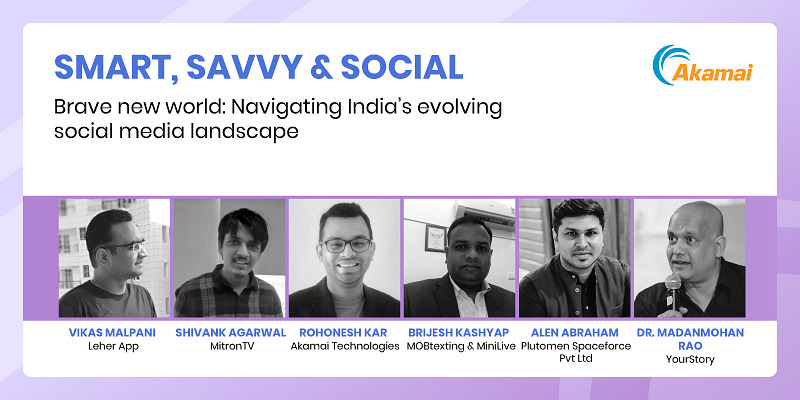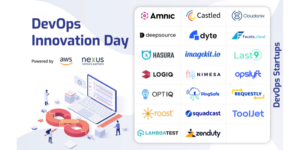Falling prices of smartphones and data have democratised access to the internet across India, and in turn, brought about greater variety for expression through social media. A new generation of video-first social media platforms, that are accessible in a variety of vernacular languages, have taken the country by storm.
To dive deep into the current landscape of India’s social media platforms, YS, in collaboration with Akamai, compiled the report “Smart, savvy, and social: Democratizing content creation for the next billion”. It provides a brief description of emerging short-video-based social media platforms, the various factors that led to the transformation of India’s social media content landscape, the challenges that the sector faces, and the solutions that can be implemented to take advantage of the opportunities that the new digitally savvy world presents.
Read more | Smart, savvy, and social: Democratizing content creation for the next billion
To get a nuanced portrait of why such platforms are poised to capture a significant market share of India’s social media landscape, YS, in association with Akamai, hosted an insightful panel discussion with the founders and leaders of some of India’s leading social media and short video sharing platforms, where they discussed ways to navigate this evolving social media landscape.
This discussion featured Vikas Malpani, Co-founder & CEO, Leher App; Shivank Agarwal, Co-founder & CEO, MitronTV; Brijesh Kashyap, Founder & CEO, MiniLive; Allen Abraham, Founder &CEO, SquadCam and Rohonesh Kar, Presales Leader of the Media and Carrier Division for India at Akamai. Moderated by YS’s Madanmohan Rao, here’s a look at some of the key takeaways from this session.
Building on the momentum of 2020
While the COVID-19 pandemic brought the world to a grinding halt in early 2020, with countries around the world announcing lockdowns and issuing work-from-home orders, in India, it translated to massive growth for video-first social media platforms. When asked about the potential opportunities that such a landscape offers, Vikas said, “We’re building Leher to democratise discussions on social media which have been aided by the increasing consumption of content and access to the internet. There is an upheaval in the way people consume social media today, not just for entertainment, but also for conversations. We’re building on this very momentum.”
SquadCam founder Allen said that the app, launched in 2020, expects to grow larger this year as it focussed on enhancing the interaction between friends and family via a dedicated medium. “Our technology is very stable and our continuous video sharing offering is our USP. The next decade for us will be about continuous content sharing and learning,” he said.
5G and AI/ML will define the future of video-first social media in the next decade
Technology is a great enabler, with its ability to bring about a revolution across sectors. When asked about technologies that will have the greatest impact on this space, the panelists said they are optimistic technologies such as 5G and AI/ML on their product and offerings. “The last decade has been about building the right tech infrastructure for these platforms. The next decade will be about making things easier. We talk about AI as an enabler, but we are still not adept at deploying AI at ease for challenges such as video moderation, language limitations and mapping the right content to the right consumers,” said Shivank of Mitron TV.
Vikas concurred, adding that the app is leveraging technology to solve any challenges such as moderating wrongful content, cybersecurity, buffering etc. “This is the decade of 5G and mobile-first consumption. There will also be big space for conversations, apart from entertainment. It can help us build an ‘always- live’ ability. In the next decade, advancement of mobile tech , data capacity on mobile servers, and the ability to do better verification of users will be crucial, and will be heavily dependent on evolving technologies.”
Meeting the needs of the end-user should be the priority
For any social media platform, its users, their engagement and retention, are the most crucial aspects. This sentiment was aptly put across by Akamai’s Rohonesh Kar during the discussion. “Focus on the user and UX and Security. If that’s delightful, everything else will follow,” he said.
Echoing this mantra, MiniLive’s Brijesh said that he is working towards enabling quality streaming on his platform above all else, which will lead to better acquisition and retention, given that users seek it the most. This is especially true for users from Tier-2 and Tier-3 cities where internet connectivity is intermittent and browsing speeds are slower as compared to metros, he said. For Allen of SquadCam, the platform is focused on making their content and support available in local languages for ease of access and use.
Balancing scale and quality
With the phenomenal growth witnessed by video-first social media platforms, how are they striking the right balance between scale and quality? “Sustainable growth is most important. Because of early growth, a lot of effort went into building a good tech stack. However, growth should not become a limiting factor. We are scaling our back-end to ensure that no issues can arise in scaling efforts. We are also focusing on retention by tracking metrics such as the number of videos created and directly uploaded on the platform. When we started, it was at 0 percent. We are now at 70 percent. And leveraging the right technology has enabled this positive change,” said Shivank.
Speaking on scale and growth in smaller cities, and the role of Akamai in ensuring that all its customers are able to keep up the same quality, Rohonesh said, “We have always realized that the majority of growth for video platforms is going to come from Tier-2 and Tier-3 cities. We have planned for that in advance. Instead of having super clusters in metros, we have gone ahead and deployed a highly distributed network across 47 cities in India. This way, we are much closer to the user. We believe that the closer you get to the end-user, the better the performance you can provide to them.”
Leveraging the right technology and partner for security
With remote working increasing the risk of cyberattacks, building a robust security infrastructure for social media platforms is equally crucial. From leveraging industry tools to following best-practices, conducting risk mitigation tests and educating employees about attacks, the panelists discussed various ways to address security concerns. However, one common aspect in all these discussions was the need for the right technology partner.
As these platforms saw massive growth, it also gave hackers the opportunity to utilize new ways to create disruption; data breaches have become common because of the increased vulnerability. When asked about how security threats have evolved in recent times and the way forward to secure one’s operations, Rohonesh said, “The top form of cyber security attacks are DDOS attacks and Bots acting as legitimate users. There is a lot of work that needs to happen to layer your defense to protect apps. The challenge in tackling these issues is capacity, not capability,” said Rohonesh. For example, a DDOS attack can run into 1 or 2 TBPS worth of bandwidth, which means that the organization soon runs out of capacity to protect their apps. “This is where Akamai comes in to take care of these security concerns for you.”
The panelists also discussed their future growth plans, the need for secure mechanisms of platform development, the importance of relying on technology providers in their growth journey, their expansion plans and much more.










